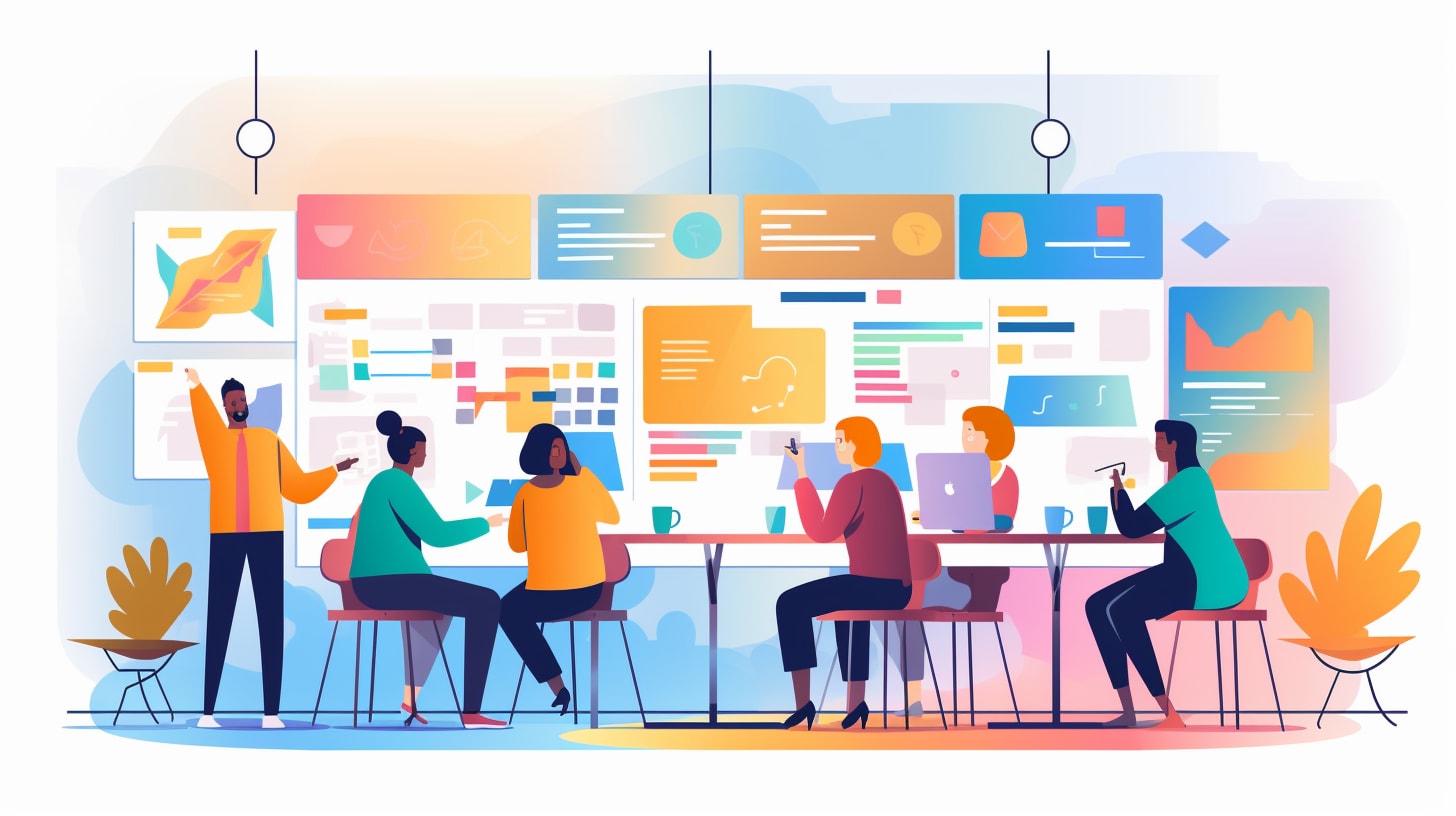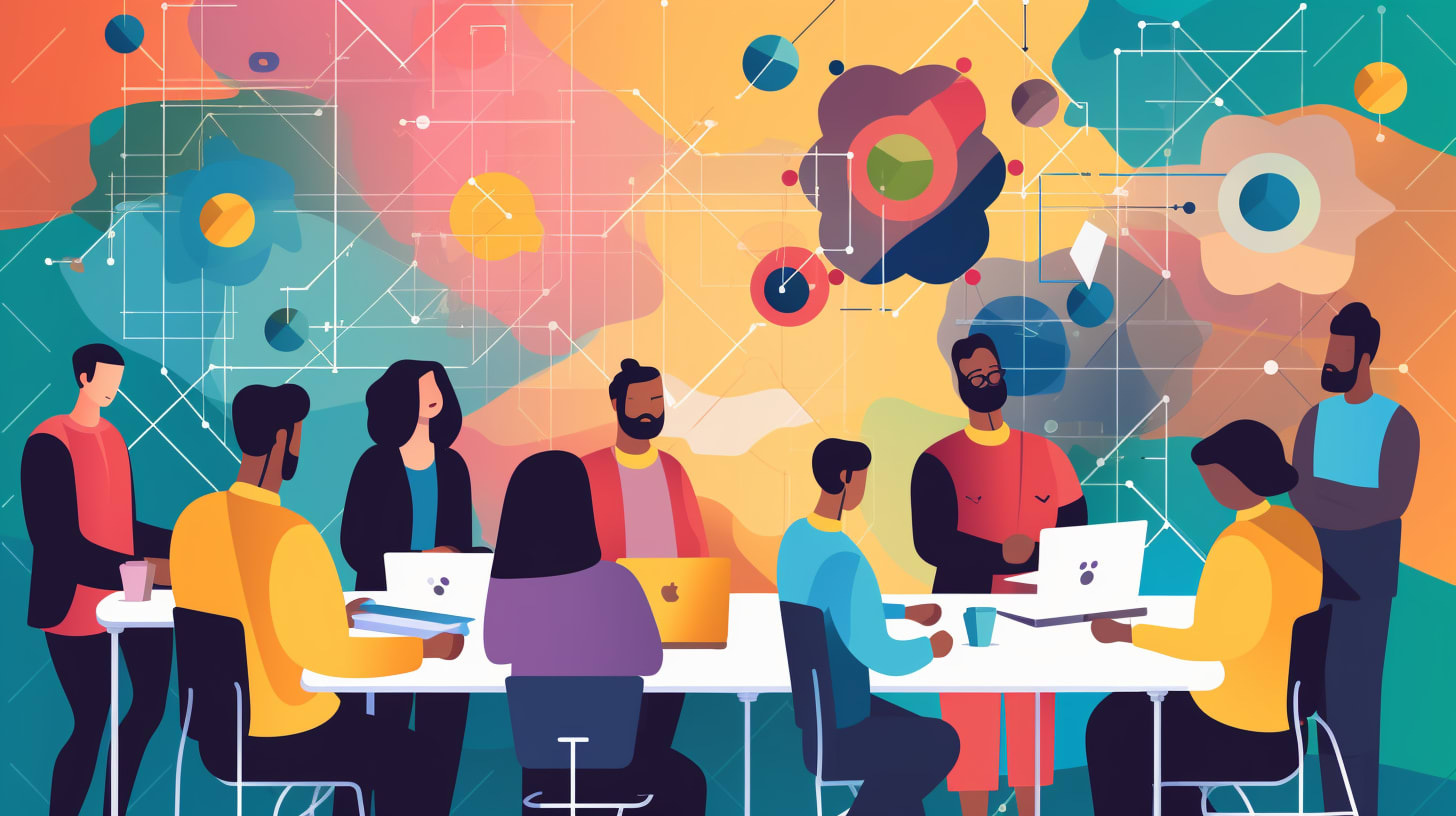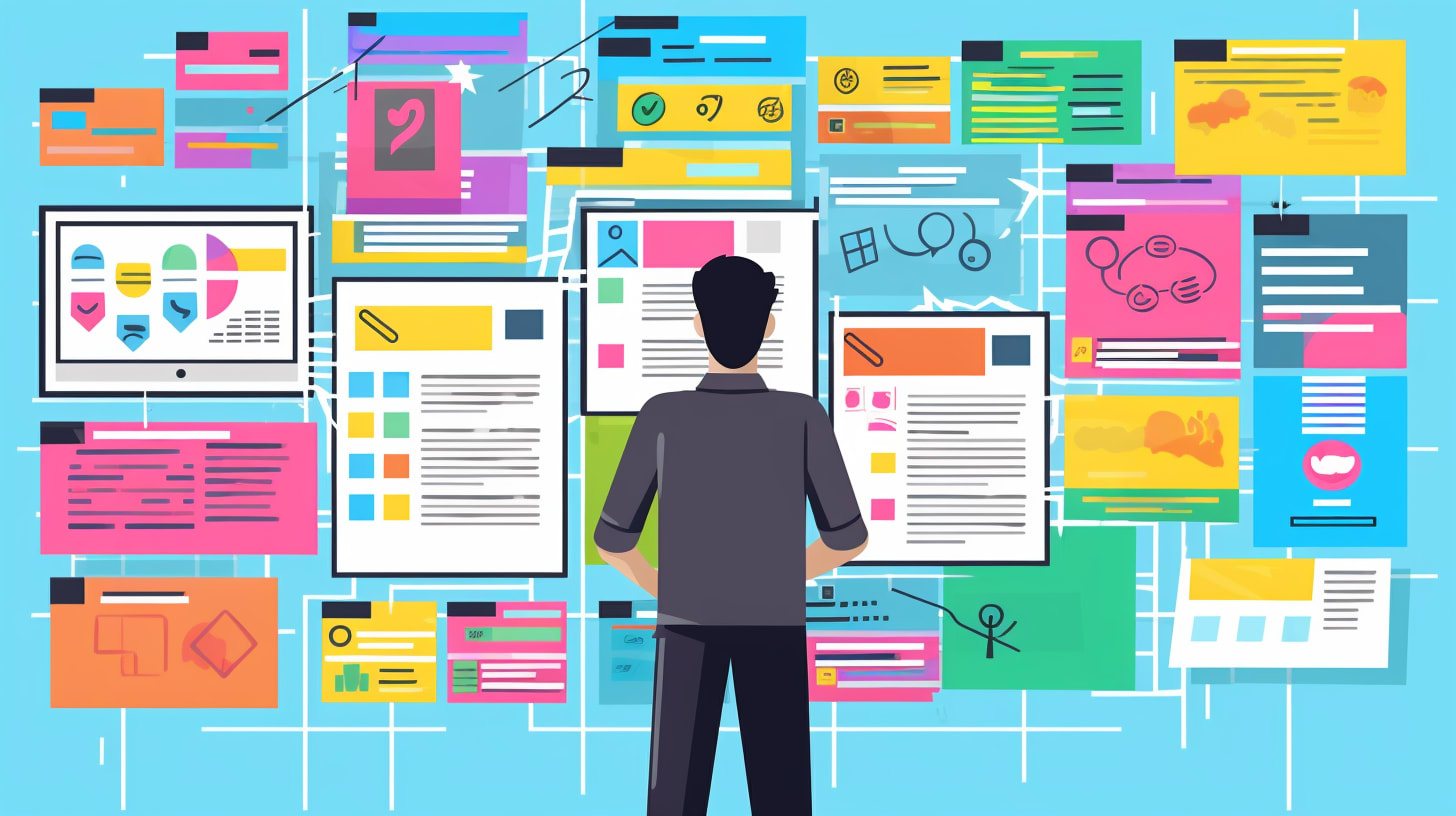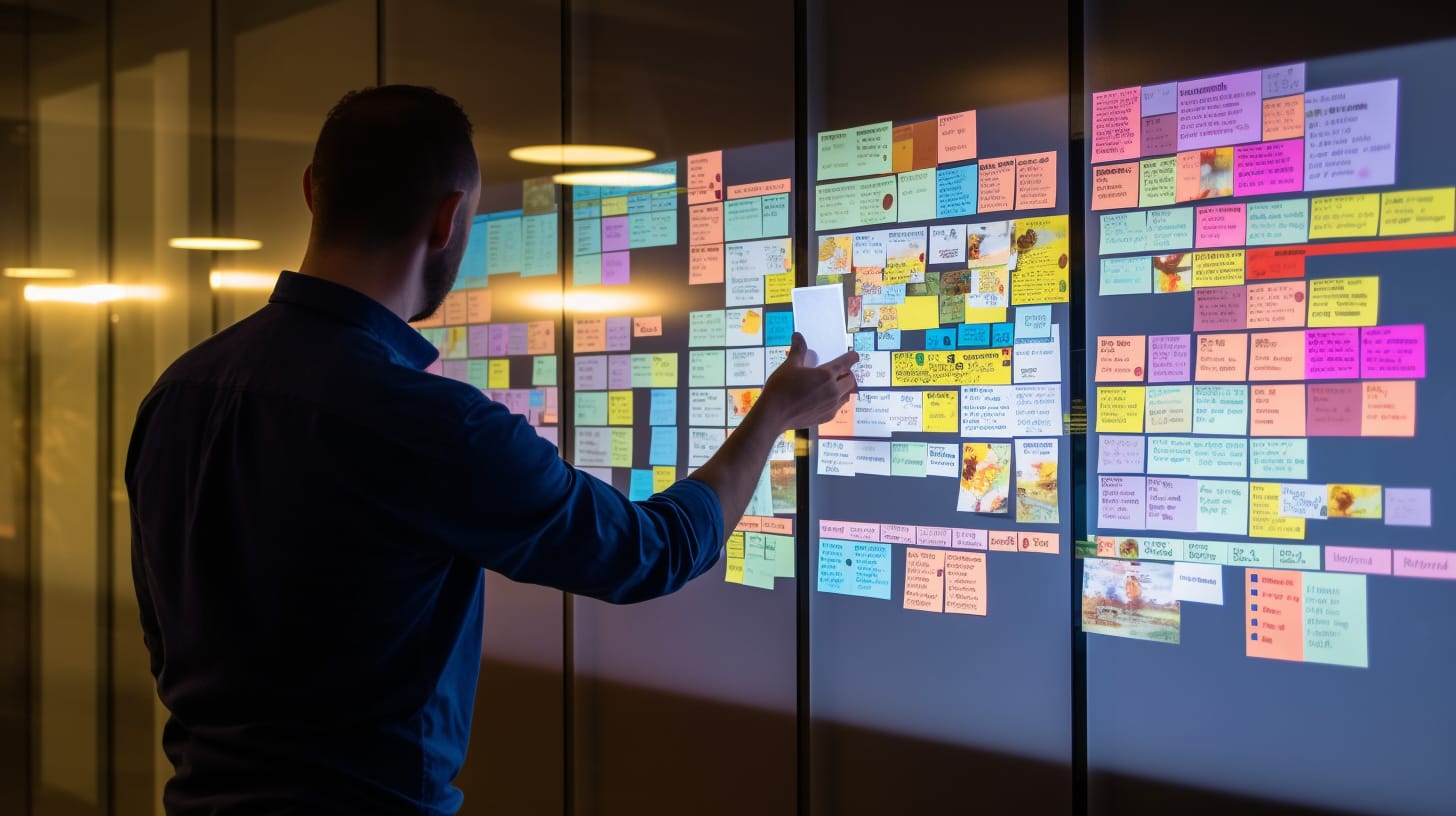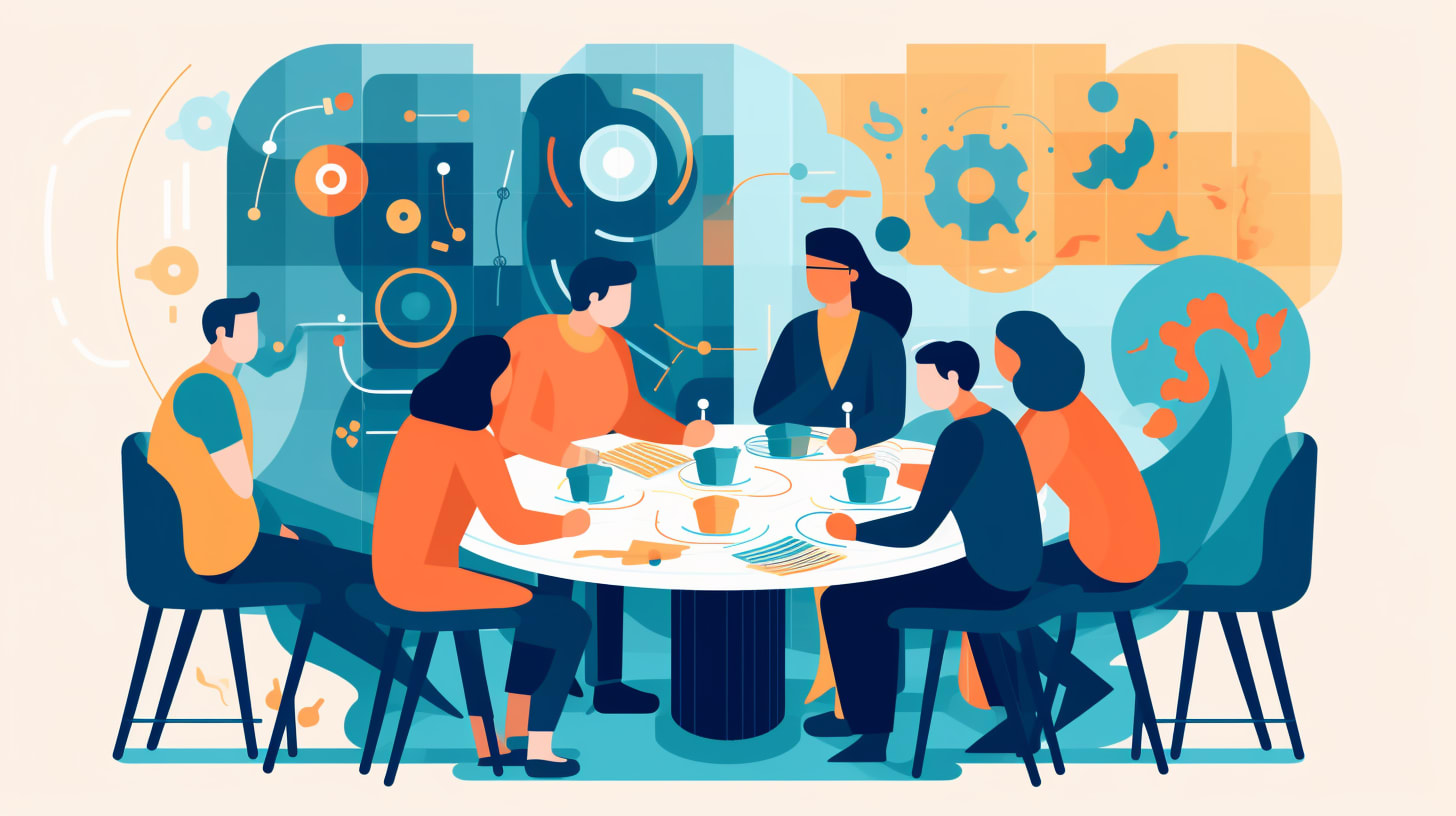The world of design is ever-evolving, and the advent of artificial intelligence (AI) has brought a new dimension to the field. As AI continues to advance, it becomes increasingly intertwined with user experience (UX) and user interface (UI) design, resulting in more intuitive, efficient, and personalized digital products. So, what exactly is AI design, and how does it differ from traditional UX/UI practices?
In this comprehensive guide, we will explore the fascinating world of AI design, delving into its impact on UX and UI design, the key skills required, and the potential challenges and opportunities it presents. By the end of this journey, you'll have a deeper understanding of AI design, the role it plays in shaping the future of digital products, and how you can get started in this exciting and innovative field.
Short Summary
- AI design is revolutionizing UX and UI design by utilizing machine learning algorithms to gain insights into user behavior.
- AI designers must possess a combination of technical skills (coding, data science, etc.) and soft skills (creative problem-solving & adaptability) for success in the field.
- Case studies of successful AI projects showcase potential to revolutionize product and service design through enhanced user experiences.
The Role of AI in Design
AI design encompasses the use of artificial intelligence to construct user experiences and interfaces that are more intuitive, efficient, and personalized. It has become an invaluable tool for UX and UI designers, who have historically focused on different aspects of the design process. UX designers are primarily concerned with the user's user journey itself, designing the flow of activities a user must go through to solve a problem. UI designers, on the other hand, build upon this foundation by adding aesthetic and interactive design elements to create visually appealing and functional interfaces.
With the integration of AI, these distinct roles begin to converge, giving rise to a new era of design. AI-driven UX design leverages machine learning algorithms to gain insights into user behavior and preferences, resulting in more tailored experiences. Similarly, AI-powered UI design uses AI to streamline processes such as image recognition, natural language processing, and voice recognition. This allows designers to focus on more creative tasks and optimize their time.
As AI continues to make strides in the design world, it's important for designers to adapt and embrace the opportunities it presents. This includes acquiring new skills, staying updated with the latest trends, and being open to experimentation. With the right mindset and tools, AI design can transform the way we create and interact with digital products.
AI-Driven UX Design
AI-driven UX design is all about utilizing machine learning algorithms to understand user behavior and preferences, allowing for more tailored experiences. These algorithms enable the gathering and examination of extensive user research and data, providing invaluable insights that can be used to create personalized user experiences. This not only enhances the user's journey, but also reduces the amount of time and effort required for designing and developing user interfaces.
The benefits of AI-driven UX design are evident: users receive more customized experiences tailored to their needs and preferences, while designers can focus on more creative tasks. However, the implementation of AI-driven UX design is not without its challenges. For one, it requires an in-depth comprehension of user behavior and preferences, which can be complex to unravel. Additionally, the creation of AI-driven UX design can be costly and time-consuming, which may be a deterrent for some.
Despite these challenges, AI-driven UX design holds immense promise for the future of user experience. As technology continues to advance, we can expect to see even more sophisticated AI-driven UX design tools and techniques that will revolutionize the way we interact with digital products.
AI-Powered UI Design
AI-powered UI design is another facet of AI design that is transforming the way we create user interfaces. By utilizing AI to automate tasks such as image recognition, natural language processing, and voice recognition, UI designers can focus on creating visually appealing and functional interfaces that enable users to complete tasks with ease.
UI designers play a crucial role in the design process, prioritizing visual elements and touchpoints that allow users to interact with a product. Typography, color palettes, buttons, animation and other imagery might all be part of a design project. These elements can help bring a web page to life. One of the most notable applications of AI in UI design is the development of voice-based interfaces, which enable users to communicate with a system using voice or speech commands. These interfaces, such as Amazon Alexa and Google Assistant, showcase the potential of AI-powered UI design in enhancing user interaction with digital products.
As AI continues to evolve, we can anticipate the emergence of more tools and automation that streamline visual design stages of the UI design process, making it easier for designers to create visually stunning and highly functional interfaces that enhance user engagement and satisfaction.
The Intersection of AI, UX, and UI Design
AI, UX, and UI design intersect in several ways, creating a unique synergy that has the potential to revolutionize the way we design products and services. For instance, AI can offer personalized and efficient user experiences, enhancing UX and UI design by providing insightful recommendations based on user data. This enables designers to create interfaces that cater to the specific needs and preferences of each user, ultimately leading to a more seamless and enjoyable user experience.
Another way AI intersects with UX/UI design is through the automation of mundane tasks. By leveraging AI to automate everyday tasks such as wireframing, prototyping, and image recognition, designers can focus on more creative aspects of the design process. This not only saves time, but also allows designers to explore new ideas and concepts, leading to more innovative solutions.
In summary, the intersection of AI, UX, and UI design presents a wealth of opportunities for designers to create more personalized, efficient, and engaging user experiences. By embracing the power of AI, designers can push the boundaries of traditional design practices and create digital products that truly cater to the needs and preferences of their users.
Key Skills for AI Designers
To thrive in the world of AI design, one must possess a unique blend of technical and soft skills. On the technical front, AI designers require proficiency in coding, data science, and machine learning, as these skills form the foundation of AI-driven design. Additionally, UX/UI designers need to be well-versed in visual aspects of UX research responsive design, wireframing and prototyping, interaction design, visual communication, and information architecture.
On the other hand, soft skills such as creative problem-solving and adaptability are equally crucial for AI designers. Creative problem-solving is the capacity to think outside the box and devise novel solutions to issues, which is essential for tackling the unique challenges that AI design presents. Adaptability, defined as the capacity to adapt to new situations and challenges, is necessary for AI designers to stay abreast of the ever-changing technology and design trends.
Technical Skills
AI designers not only need a strong foundation in coding, data science, and machine learning, but also require a deep understanding of UX/UI design principles. For UX/UI designers, relevant educational qualifications include degrees in digital design, graphic design, or interaction design for UI designers, while UX designers may benefit from degrees in computer science, psychology, human-computer interaction, or design.
UX/UI designers must possess a variety of technical design skills. These include UX research, wireframing and prototyping, interaction design, visual communication, and information architecture. These skills enable designers to create user interfaces that are not only visually appealing but also functional and user-friendly.
In addition to these skills, AI designers must also possess a strong foundation in mathematics and programming, as these form the basis of AI-driven design. By mastering these technical skills, AI designers can effectively create innovative solutions that cater to the unique needs and preferences of users.
Creative Problem-Solving
Creative problem-solving is a vital skill for AI designers, as it allows them to devise original solutions to design issues. This skill goes beyond technical expertise, as it requires the ability to think beyond conventional boundaries and explore new ideas and concepts. In AI design, creative problem-solving is particularly important because it enables designers to tackle the unique challenges that AI presents, such as ensuring transparency, trust, and security in AI systems.
Being a creative thinker in AI design also entails the ability to recognize patterns and trends in data, which can be used to inform design choices. This skill is especially valuable in the realm of AI-driven UX design, where designers must leverage user data to create personalized experiences mobile apps that cater to individual preferences and needs of target users.
Ultimately, creative problem-solving is a critical skill for AI designers, as it empowers them to push the boundaries of traditional design practices and create innovative solutions that enhance user experiences.
Adaptability
Adaptability is another essential skill for AI designers, as it ensures they can effectively respond to evolving technologies and trends. In the fast-paced world of AI design, the ability to adapt to new situations and challenges is crucial for staying relevant and maintaining a competitive edge.
Adaptability in AI design can manifest in several ways, such as the capacity to alter designs according to evolving user requirements, the capability to learn from new data, and the ability to adjust to fluctuating market conditions. By being adaptable, AI designers can create systems that are not only more precise and successful in decision-making, but also more resilient to changes in the industry landscape.
In conclusion, adaptability is a key skill for AI designers, as it enables them to keep up with the rapid pace of change in the world of design and technology, ensuring their creations remain relevant, effective, and user-friendly.
The Future of AI in Design
Although still in its early stages, AI design has the potential to revolutionize the way we design products and services. AI is expected to have a considerable influence on design, though it is unlikely to completely supplant designers. Rather, AI will be used to automate certain aspects of design and augment the creative process. As AI technology continues to evolve, we can anticipate the emergence of more tools and automation that streamline the design process.
The benefits of utilizing AI in design are manifold, from automating tedious tasks like creating wireframes and prototypes, to aiding designers in generating ideas and concepts more expeditiously. AI can furthermore help designers recognize patterns and trends in data and visual assets, which can be utilized to inform design choices.
However, the future of AI in design also presents challenges, such as the potential for bias in AI systems and the possibility of unintended outcomes. Moreover, AI can be costly and complicated to implement. Despite these challenges, AI holds immense promise for the future of design, and with the right tools and strategies, it can be leveraged to create more effective and efficient designs.
Challenges and Opportunities in AI Design
AI design is not without its challenges and opportunities. On one hand, ethical considerations must be taken into account when designing AI systems, ensuring that they are transparent, trustworthy, and secure. Designers should also be aware of the potential for bias in AI systems and the potential for misuse.
On the other hand, privacy concerns must be addressed when designing AI systems, ensuring that data is collected and stored securely, and that users are aware of how their data is being used. Moreover, designers should be cognizant of the potential for AI systems to be used to infringe upon user privacy.
One of the most significant opportunities in AI design lies in the incorporation of more diverse perspectives. By ensuring that AI systems are created with user research, customer analysis, and an array of views in consideration, designers can minimize the possibility of prejudice in AI systems and guarantee that AI systems are designed with the requirements of all users in mind.
How to Get Started in AI Design
If you're interested in pursuing a career in AI design, there are several ways to get started. Building a portfolio, gaining hands-on experience, and taking on freelance work are all great ways to begin your journey in UX/UI design. Additionally, networking with other professionals can help you make valuable connections and learn from their experiences.
Educational pathways for learning UX design include UX design bootcamps, which offer intensive courses on the key principles and techniques of UX design. These bootcamps can provide you with the skills and knowledge needed to excel in the field of AI design.
Another way to gain hands-on experience in AI design is to work on simple projects, which can help you develop your technical skills and creative problem-solving abilities. By learning the fundamentals of programming and mathematics, and mastering the essential skills of UX/UI design, you can embark on a rewarding and fulfilling career in AI design.
Case Studies: Successful AI-Driven Design Projects
There are numerous successful AI-driven design projects that showcase the potential of AI in revolutionizing the way we design products and services. Voice-based virtual assistants, facial emotion recognition and detection, and AI-powered marketing strategies are just a few examples of the innovative applications of AI in design.
One notable AI-driven design project is Google Duplex, an AI-driven virtual assistant that facilitates phone calls and appointment bookings for the user's entire journey. Another example is Amazon Alexa, an AI-powered virtual assistant that can be used to manage smart home devices, stream music, and provide answers to inquiries. IBM Watson is an advanced AI-driven platform that enables users to analyze vast amounts of data and gain meaningful insights.
These case studies demonstrate the power of AI-driven design in enhancing user experiences and streamlining the design process. As technology continues to advance, we can expect to see even more innovative AI-driven design projects that push the boundaries of what's possible in the world of design.
Summary
In conclusion, AI design is poised to transform the way we create and how users interact with digital products, offering a wealth of opportunities and challenges for designers. By understanding the key concepts and principles of AI design, acquiring the necessary technical and soft skills, and staying updated with the latest trends and technologies, designers can harness the power of AI to create more personalized, efficient, and engaging user experiences.
As we continue to explore the limitless possibilities of AI in design, it's crucial for designers to embrace the opportunities it presents, while remaining mindful of the challenges and ethical considerations that come with this innovative technology. By doing so, we can create a future where AI-driven design not only enhances the way we interact with digital products, but also enriches our lives in ways we never thought possible.

